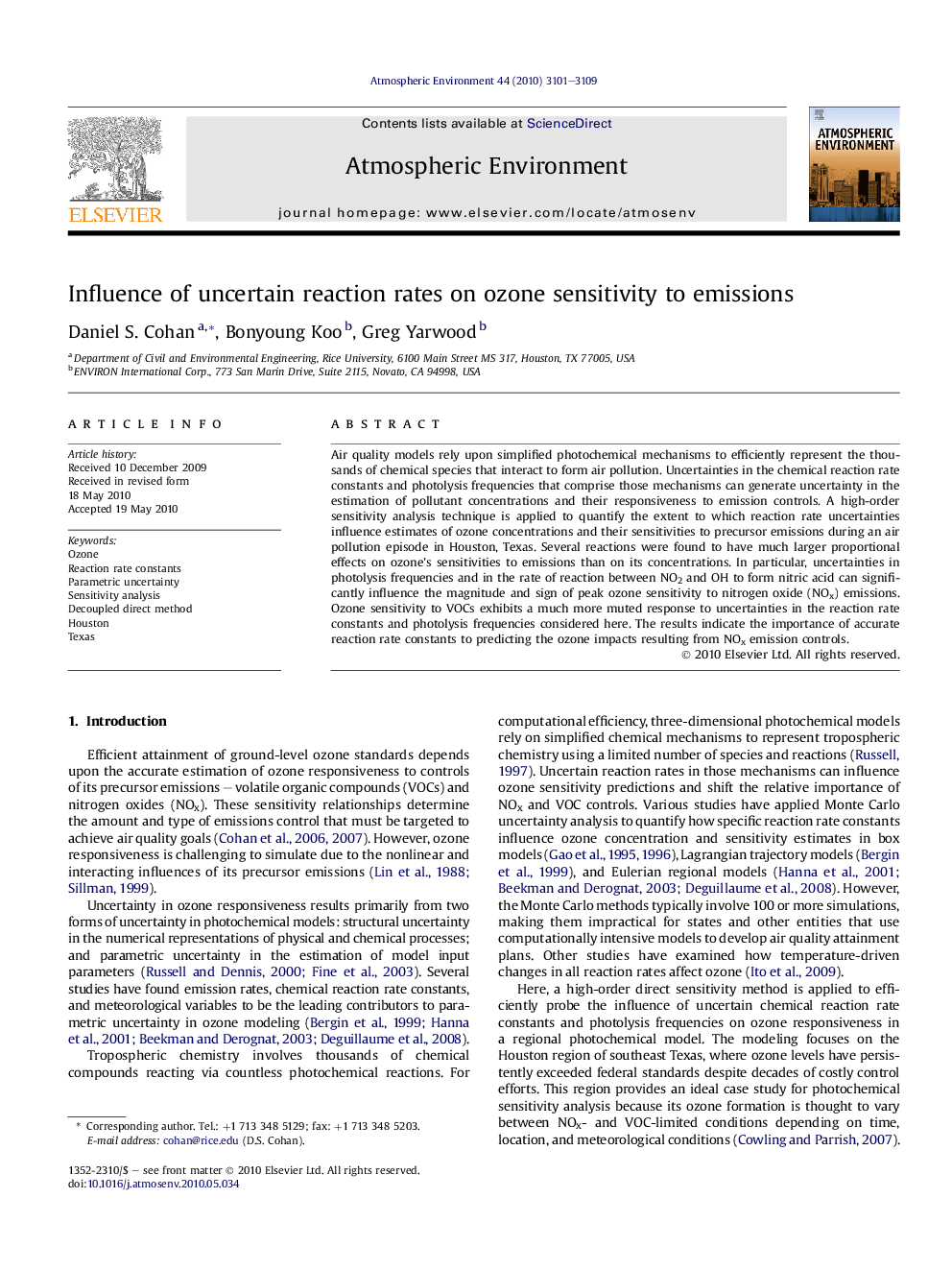| Article ID | Journal | Published Year | Pages | File Type |
|---|---|---|---|---|
| 4440727 | Atmospheric Environment | 2010 | 9 Pages |
Abstract
Air quality models rely upon simplified photochemical mechanisms to efficiently represent the thousands of chemical species that interact to form air pollution. Uncertainties in the chemical reaction rate constants and photolysis frequencies that comprise those mechanisms can generate uncertainty in the estimation of pollutant concentrations and their responsiveness to emission controls. A high-order sensitivity analysis technique is applied to quantify the extent to which reaction rate uncertainties influence estimates of ozone concentrations and their sensitivities to precursor emissions during an air pollution episode in Houston, Texas. Several reactions were found to have much larger proportional effects on ozone's sensitivities to emissions than on its concentrations. In particular, uncertainties in photolysis frequencies and in the rate of reaction between NO2 and OH to form nitric acid can significantly influence the magnitude and sign of peak ozone sensitivity to nitrogen oxide (NOx) emissions. Ozone sensitivity to VOCs exhibits a much more muted response to uncertainties in the reaction rate constants and photolysis frequencies considered here. The results indicate the importance of accurate reaction rate constants to predicting the ozone impacts resulting from NOx emission controls.
Keywords
Related Topics
Physical Sciences and Engineering
Earth and Planetary Sciences
Atmospheric Science
Authors
Daniel S. Cohan, Bonyoung Koo, Greg Yarwood,
